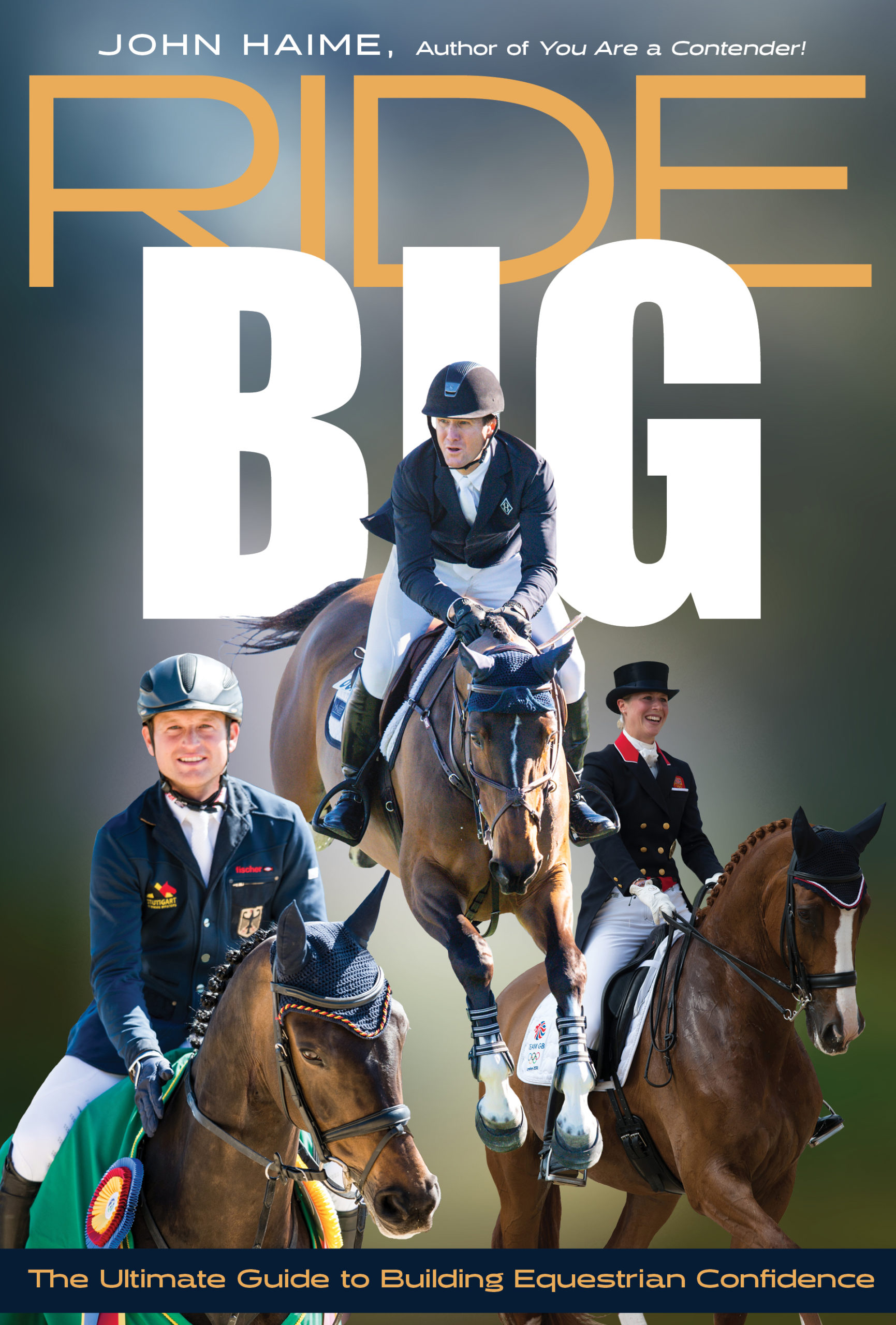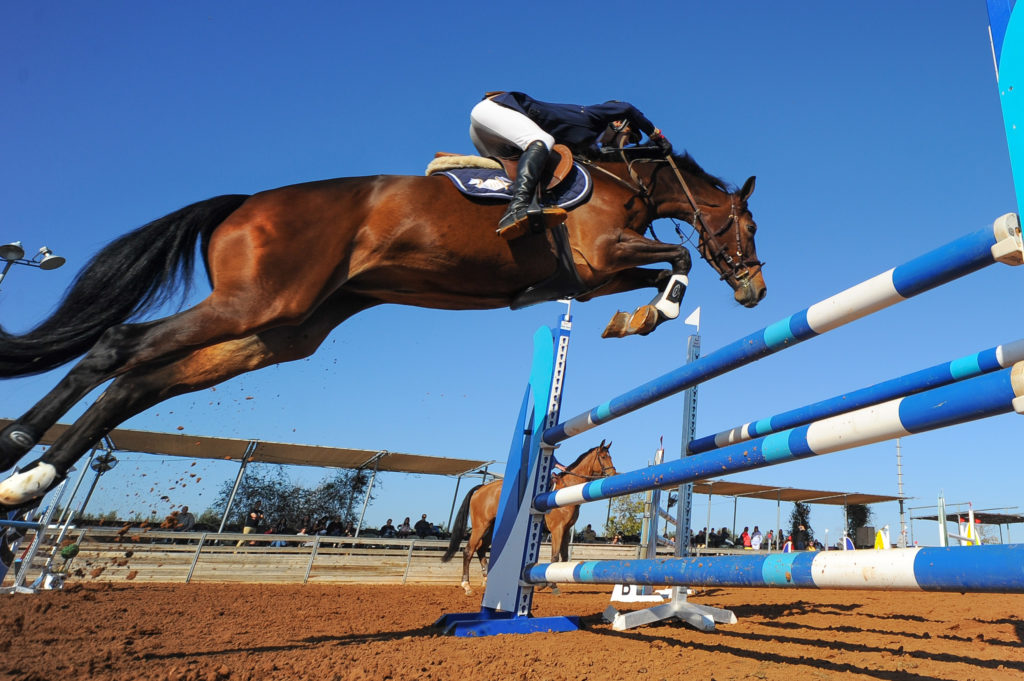The Confidence Chain
In this excerpt from his book RIDE BIG, pro-athlete performance coach John Haime explains a series of steps that can help you bring a higher level of confidence to the competitive environment.
Phase 1: Technical
Do you evaluate your technique in training in order to build great habits? An equestrian athlete must have strong technical ability and develop the key fundamentals to be a consistent rider. There is great future value in the relentless attention to the small details of technique. Training sessions give you the opportunity to evaluate technical ability by evaluating posture, alignment, hand position/tension, balancing your seat, and proper distribution of your weight in the saddle. The first step in the Confidence Chain is evaluating each technical component, changing it if needed, and getting comfortable with it.
Phase 2: Try It
Once the new technical piece starts feeling natural, it’s time to see if you can use it in enhancing basic skills with your partner. For example, deciding when to start bending your horse as you approach a corner, or correctly timing when and how strongly to apply the aids. In polo, is your grip and angle of the polo mallet helping you hit the ball in the direction you want, and as accurately and solidly as you want? The point of this phase is getting comfortable with the technique and repeating the movement with the new technique until it starts feeling like it could be challenged with a test.
Phase 3: Test It
Now that you’ve corrected/changed some technique, tried it, and you see the differences it creates in your movement with your horse, the next step is a test. In order to really believe you can do it when it counts, it’s important to create some feelings of good, positive pressure to simulate the competitive environment.
Can you do it?
Many athletes opt out during this phase because they are afraid of testing and think:
Will it expose flaws?
Will it show my inability to actually do it?
Will it work?
Will I fail?
Well, this is exactly why I want you to test.
If you and/or your horse can’t do it in training, is it realistic to think that you can do it when it counts in competition?
Are you going to the competitive ring with a variety of doubts, hoping you can do it? Or knowing you can do it?
I am often asked, “Why should I test in practice if every situation in competition is different and it’s not really like practice?”
Well, it’s about a gap in intensity of feeling between practice and training. The more you can create the focus, intensity, and some pressure in training, the easier it will be to feel comfortable and answer the questions when it counts. Testing in training is the little bit of competitive pressure you need to prove to yourself that you can do it when it counts—in the moment. Eventually, there will be no difference in how well you can perform the task in training and in competition.
Professional riders and show jumping trainers Jonathon Millar and Kelly Soleau-Millar of Canadian-based Millar Brooke Farm believe testing following skill building is important for their training and building confidence with students.
“We definitely try to test skills with our students, but it’s more in the form of challenges,” Jonathon and Kelly explain. “The main thing is that we first focus on the conditions that the rider will see in competition. If the competition is on the grass, great, we get them comfortable on our grass field at Millar Brooke. If they are inside at the end of the season, we move them inside to help with those challenges and feelings. And, yes, it is always our objective to challenge our students to help them know they can bring those skills to the show ring. It is more about level of difficulty versus height. We are sensitive to the physical demands on the horses. We certainly create challenge with scenarios like gymnastics, more technical patterns, difficult turns—just increasing the technicality of the training. We know the training is to build the skills and confidence for the show ring. The challenge phase with each rider varies, depending on the ability and experience of the rider.”
Depending on your equestrian discipline, you may have to make adjustments as to how you test your training. For example, if you are a dressage rider, testing in small segments so your partner does not anticipate maneuvers in the competition phase is important in your testing phase. As Jonathon and Kelly highlight, show jumpers can be challenged through more technical course patterns, challenging turns, and how quickly questions are presented on the course. In your own way, within your equestrian discipline, you’ll have to adapt to the testing phase of the Confidence Chain to rigorously put your skills to the test while respecting the physical pressure on your horse. Create enough challenge to test your skills under some pressure, and build up the “knowing” you can do it before it really counts.
Phase 4: Competition
The next step is deciding if you passed the test and are comfortable with the skills you’ve developed in the Technical and Try It phases of the Confidence Chain. If yes, then it’s time to put it to the test when it counts: competition. If no, meaning you struggled completing the challenge, back up in the Chain and decide what further development you need to get a better result on the test.
Is it more work on the technique in Phase 1?
Is it more repetition to help make the technique feel comfortable in Phase 2?
Each phase is connected to the next in the Chain, so you are either always progressing to the next part or backing up and strengthening the last part before moving forward. This ensures your training can produce the right action and you get the confident feeling that you “know” you can do it.
This excerpt from RIDE BIG by John Haime is reprinted with permission from Trafalgar Square Books (www.horseandriderbooks.com).


